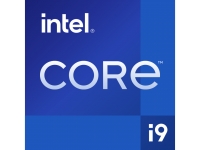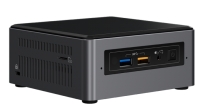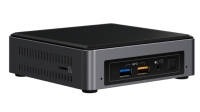| Processor family | Intel® Core™ i7 |
| Processor cores | 16 |
| Processor socket | LGA 1700 |
| Box | Y |
| Processor manufacturer | Intel |
| Processor model | i7-13700K |
| Processor operating modes | 64-bit |
| Processor generation | 13th gen Intel® Core™ i7 |
| Processor threads | 24 |
| Performance cores | 8 |
| Efficient cores | 8 |
| Processor boost frequency | 5.4 GHz |
| Performance-core boost frequency | 5.3 GHz |
| Performance-core base frequency | 3.4 GHz |
| Efficient-core boost frequency | 4.2 GHz |
| Efficient-core base frequency | 2.5 GHz |
| Processor cache | 30 MB |
| Processor cache type | Smart Cache |
| Processor base power | 125 W |
| Maximum turbo power | 253 W |
| Stepping | B0 |
| Bus type | DMI4 |
| Maximum number of DMI lanes | 8 |
| Memory bandwidth supported by processor (max) | 89.6 GB/s |
| Processor codename | Raptor Lake |
| Processor ARK ID | 230500 |
| Memory channels | Dual-channel |
| Maximum internal memory supported by processor | 128 GB |
| Memory types supported by processor | DDR4-SDRAM, DDR5-SDRAM |
| ECC | Y |
| Memory bandwidth (max) | 89.6 GB/s |
| On-board graphics card | Y |
| Discrete graphics card | N |
| On-board graphics card model | Intel UHD Graphics 770 |
| Discrete graphics card model | Not available |
| On-board graphics card outputs supported | Embedded DisplayPort (eDP) 1.4b, DisplayPort 1.4a, HDMI 2.1 |
| On-board graphics card base frequency | 300 MHz |
| On-board graphics card dynamic frequency (max) | 1600 MHz |
| Number of displays supported (on-board graphics) | 4 |
| On-board graphics card DirectX version | 12.0 |
| On-board graphics card OpenGL version | 4.5 |
| On-board graphics card maximum resolution (DisplayPort) | 7680 x 4320 pixels |
| On-board graphics card maximum resolution (eDP - Integrated Flat Panel) | 5120 x 3200 pixels |
| On-board graphics card maximum resolution (HDMI) | 4096 x 2160 pixels |
| On-board graphics card refresh rate at maximum resolution (DisplayPort) | 60 Hz |
| On-board graphics card refresh rate at maximum resolution (eDP - Integrated Flat Panel) | 120 Hz |
| On-board graphics card refresh rate at maximum resolution (HDMI) | 60 Hz |
| On-board graphics card ID | 0xA780 |
| Number of execution units | 32 |
| Multi-Format Codec Engines | 2 |
| Execute Disable Bit | Y |
| Idle States | Y |
| Thermal Monitoring Technologies | Y |
| Market segment | Desktop |
| Use conditions | PC/Client/Tablet, Workstation |
| Maximum number of PCI Express lanes | 20 |
| PCI Express slots version | 4.0, 5.0 |
| PCI Express configurations | 1x16+1x4, 2x8+1x4 |
| Supported instruction sets | SSE4.1, SSE4.2, AVX 2.0 |
| Scalability | 1S |
| CPU configuration (max) | 1 |
| Embedded options available | N |
| Direct Media Interface (DMI) Revision | 4.0 |
| Export Control Classification Number (ECCN) | 5A992C |
| Commodity Classification Automated Tracking System (CCATS) | 740.17B1 |
| Intel® Hyper Threading Technology (Intel® HT Technology) | Y |
| Intel® Turbo Boost Technology | 2.0 |
| Intel® Quick Sync Video Technology | Y |
| Intel® Clear Video HD Technology (Intel® CVT HD) | Y |
| Intel® AES New Instructions (Intel® AES-NI) | Y |
| Enhanced Intel SpeedStep Technology | Y |
| Intel Trusted Execution Technology | Y |
| Intel® Speed Shift Technology | Y |
| Intel® Turbo Boost Max Technology 3.0 frequency | 5.4 GHz |
| Intel® Gaussian & Neural Accelerator (Intel® GNA) 3.0 | Y |
| Intel® Control-flow Enforcement Technology (CET) | Y |
| Intel® Thread Director | Y |
| Intel VT-x with Extended Page Tables (EPT) | Y |
| Intel® Secure Key | Y |
| Intel® Active Management Technology (Intel® AMT) | Y |
| Intel Stable Image Platform Program (SIPP) | Y |
| Intel® OS Guard | Y |
| Intel 64 | Y |
| Intel Virtualization Technology (VT-x) | Y |
| Intel Virtualization Technology for Directed I/O (VT-d) | Y |
| Intel Turbo Boost Max Technology 3.0 | Y |
| Intel® Boot Guard | Y |
| Intel® Deep Learning Boost (Intel® DL Boost) | Y |
| Intel® Volume Management Device (VMD) | Y |
| Mode-based Execute Control (MBE) | Y |
| Intel® vPro™ Platform Eligibility | Y |
| Intel® Standard Manageability (ISM) | Y |
| Intel® One-Click Recovery | Y |
| Intel® Remote Platform Erase (RPE) | Y |
| Intel® Virtualization Technology with Redirect Protection (VT-rp) | Y |
| Intel vPro® Enterprise Platform Eligibility | Y |
| Intel® Threat Detection Technology (TDT) | Y |
| Intel® Hardware Shield Eligibility | Y |
| Intel® Total Memory Encryption - Multi Key | Y |
| Intel vPro® Essentials Platform Eligibility | Y |
| Tjunction | 100 °C |
| OpenCL version | 3.0 |
| Harmonized System (HS) code | 8542310001 |
| Package type | Retail box |
| L2 cache | 24576 KB |
| Maximum internal memory | 128 GB |
| Target market | Gaming, Content Creation |
| Launch date | Q4'22 |
| Status | Launched |
| Graphics output | eDP 1.4b, DP 1.4a, HDMI 2.1 |


































![BAREBONE INTEL® NUC6I5SYH [6.Gen.] BAREBONE INTEL® NUC6I5SYH [6.Gen.]](https://www.dcp.lv/56604-home_default/barebone-intel-nuc6i5syh-6gen.jpg)
![BAREBONE INTEL® NUC6I5SYK [6.Gen.] Small BAREBONE INTEL® NUC6I5SYK [6.Gen.] Small](https://www.dcp.lv/56602-home_default/barebone-intel-nuc6i5syk-6gen-small.jpg)


